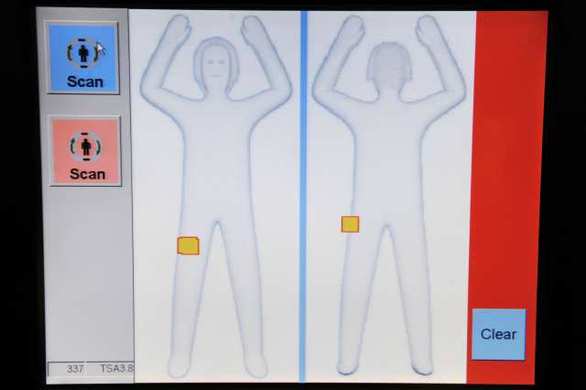Traveling While Trans: Questions Remain With TSA’s New Software

The Transportation Security Administration (TSA) released information on new software upgrades for their full-body scanners that could impact transgender people. Scanners will no longer explicitly show images of the person being scanned. Instead, a basic human figure will be shown highlighting areas of the body that may pose security risks. These software changes are being made over the coming months to scanners that use millimeter wave technology, currently a minority of the approximately 500 machines in the field. The TSA has not yet fully tested the software for the majority of machines that use backscatter technology, though it hopes to later this year. Full-body scanners have provoked outcry from the transgender people because of how they “out” transgender people going through airport security, making travel dangerous. These software changes appear likely to reduce the risk of unwanted invasion of privacy; however, aspects of the new software are troubling. In particular, it’s not clear that the software updates will change the fact that transgender people are disproportionately selected for invasive pat-downs. In this photo from the Los Angeles Times, the pink and blue buttons appear to be used to commence scanning for travelers. It appears that TSA officers need to select a pink or blue “scan” button based on their perception of a traveler’s gender. The new software may identify “anomalies” based on gender-atypical anatomy, rather than only targeting foreign objects. This may be a security trigger which would lead to an invasive pat-down, potentially embarrassing questions and in some cases, biased harassment. NCTE urges the TSA to provide greater clarity for the public on how the new scans work. NCTE Executive Director Mara Keisling said:
"In conversations with the TSA, NCTE has asked for clarification on how these new systems will actually work. We appreciate TSA's efforts to improve its methods, but it's not yet clear how much this will address the problems transgender people face at airports."
The software changes also don’t address the concerns of other groups. It may help or hinder travel for people who carry medically necessary devices or for people of certain faith traditions. For example, questions remain about how the new software detects medical devices like urine pouches, or religious wear like the kirpan, an ornamental weapon, required to be worn by orthodox Sikhs. Rollout of the new scanner software came shortly after a federal appeals court ruled that the TSA unlawfully implemented the full-body scanners because they did not allow a public comment period on the systems. NCTE Policy Counsel Harper Jean Tobin said:
"While the court ruling does not end the use of body scanners, we applaud the court's recognition that the TSA gave insufficient regard to the public's privacy concerns. The TSA should recognize that they unlawfully adopted these screening methods and should improve their transparency by providing the public with full notice and comment on current and future airport security procedures."
Mark Rotenberg, president of the Electronic Privacy Information Center (EPIC) which initially filed the suit, commented on the decision: “Many Americans object to the airport body scanner program. Now they will have an opportunity to express their views to the TSA and the agency must take their views into account as a matter of law.” Read more about the new scanner software here. Read more about the court ruling here.

